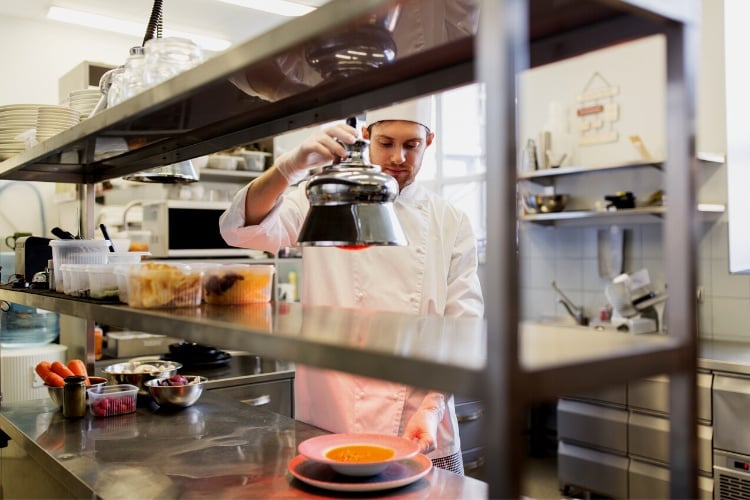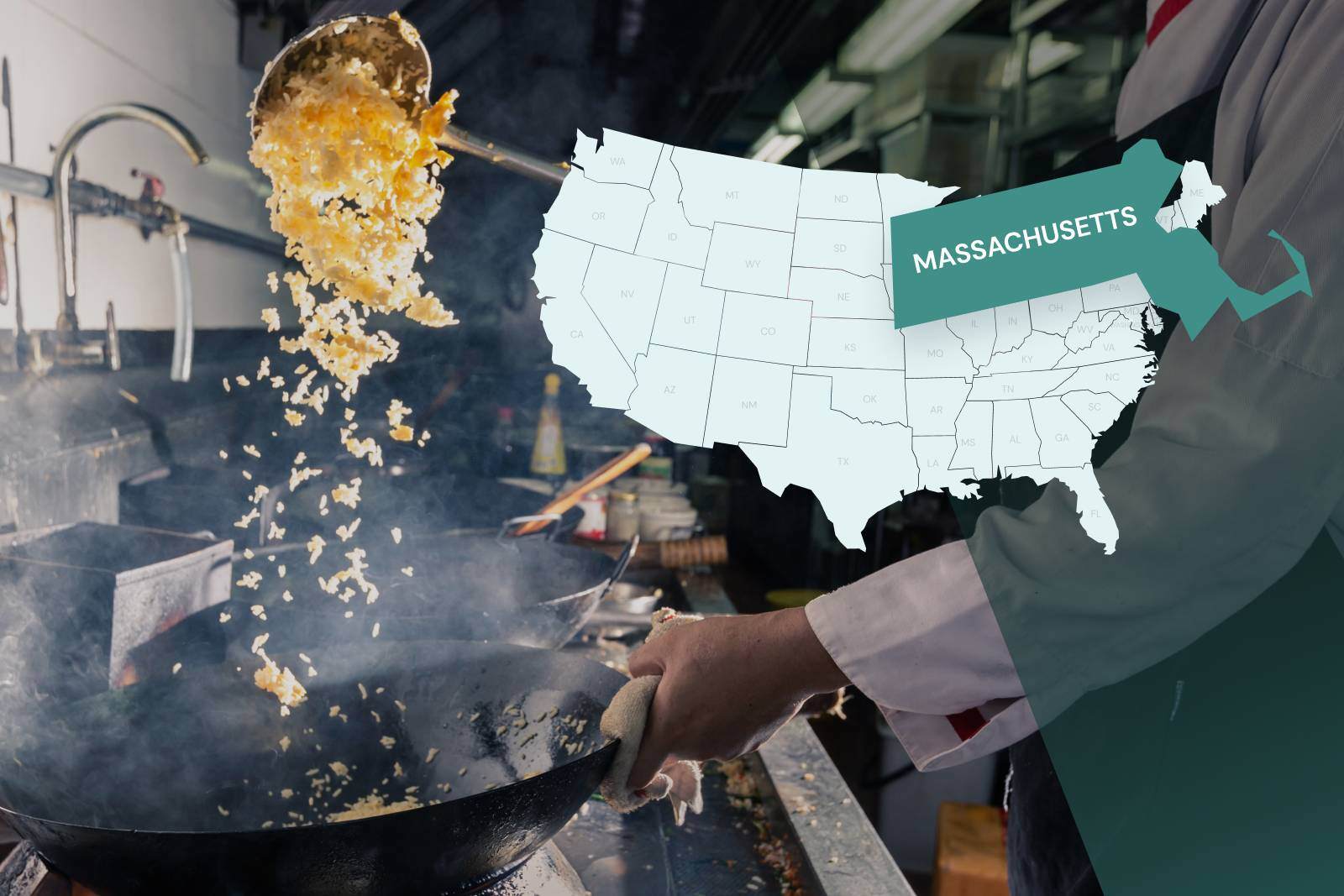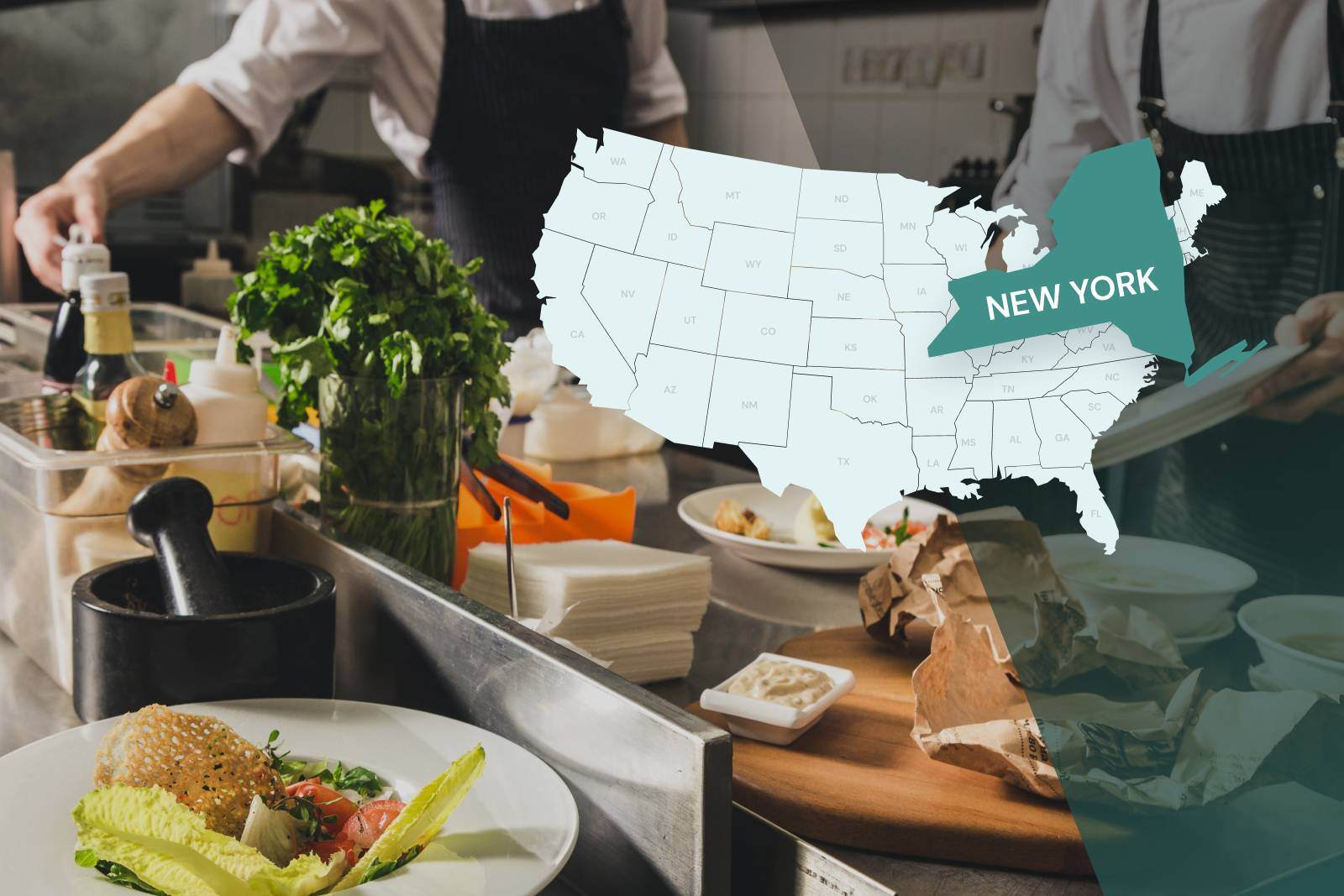Food safety is critical to any food service business–once that basic level of trust and safety is broken with the public, it’s almost impossible to get it back. One bad customer experience can result in bad reviews and a negative impact on your business, which can be incredibly difficult to recover from.
Keep your reputation unblemished by prioritizing food safety in your kitchen, thoroughly training all of your staff (from the basics up through allergens), and letting your customers know how much you prioritize their health and safety.
This post breaks down everything you need to know about food safety around cooling, heating, and refreezing food after laying the ground rules with what’s at stake and covering one of the most important food safety rules: the 2-hour rule.
First things first: the 2-hour rule
What you need to know about heating, cooling, and refreezing food
Why food safety is important
Properly heating, cooling, and refreezing food is an important part of general food safety practices. Aside from the negative impacts on your business’ reputation, improper food handling can result in spreading foodborne illnesses to your customers. Those who become ill can take negative action in the form of bad reviews, official complaints, and even lawsuits–costing you on top of the business you’ll lose from the incident.
The most severe cases of foodborne illness can result in hospitalization, death, and the authorities permanently closing your establishment. Thoroughly training your staff in proper food handling and safety procedures is vital to the success of your business!
First things first: the 2-hour rule
Food should never be left out at room temperature for more than two hours. After this point, it’s too easy for bacteria to grow, potentially causing foodborne illness for anyone who eats it. If it’s hotter than 90 degrees Fahrenheit, the window of time for food to be left out at room temperature drops to one hour.
In order to keep food safe outside of this window, have a plan for holding it at the proper temperature until it's served or storing any leftovers in the fridge or freezer as soon as possible.
What you need to know about heating, cooling, and refreezing food
Properly heating, cooling, and refreezing food is all about avoiding the Temperature Danger Zone (between 40 ° and 140 °F) or the window where bacteria grow most rapidly. Within this range, they have the ability to double in number in as little as 20 minutes.
Here’s how to avoid that with each temperature transfer.
How to safely heat food
It’s the internal temperature of food that matters for food safety, not how perfectly seared it looks on the outside. Thermometers need to be regularly calibrated and inserted into the thickest part of the item you are measuring for the most accurate reading.
Some examples from the USDA:
|
Product |
Minimum Internal Temperature & Rest Time |
|
Beef, Pork, Veal and Lamb Steaks, chops, roasts |
145 °F (62.8 °C) and allow to rest for at least 3 minutes |
|
Ground Meats |
160 °F (71.1 °C) |
|
Ground Poultry |
165 °F (73.9 °C) |
|
Ham, fresh or smoked (uncooked) |
145 °F (62.8 °C) and allow to rest for at least 3 minutes |
|
Fully Cooked Ham (to reheat) |
Reheat cooked hams packaged in USDA-inspected plants to 140 °F (60 °C) and all others to 165 °F (73.9 °C). |
|
All Poultry (breasts, whole bird, legs, thighs, wings, ground poultry, giblets, and stuffing) |
165 °F (73.9 °C) |
|
Eggs |
160 °F (71.1 °C) |
|
Fish & Shellfish |
145 °F (62.8 °C) |
|
Leftovers |
165 °F (73.9 °C) |
|
Casseroles |
165 °F (73.9 °C) |
How to safely cool food
Planning ahead means pulling what you need out of the freezer and plopping it on the counter, right? Unfortunately not. Food should NEVER be defrosted at room temperature because the risk of entering that temperature danger zone is extremely high. Food can be safely defrosted in three ways:
-
In the refrigerator
-
Under cold, running water
-
Or in the microwave
If food is thawed under cold water or in the microwave, staff should be sure to cook it immediately.
What if you’re not defrosting food, but you still need to cool it? There are two stages to safely cooling food in order to avoid the growth of dangerous pathogens, according to the 2022 FDA Food Code:
Stage 1: Cool food from 135°F to 70°F (57°C to 21°C) in two hours.
Stage 2: Cool food from 70°F to 41°F (21°C to 5°C) in four hours.
Other Factors to Consider When Cooling Food
There are a few factors to think about before beginning the cooling process. It’s important to consider how the size and density of the food, along with the shape of its container, will affect the cooling time.
To safely cool food to 70°F in the first two hours, you should:
-
Separate larger dishes into smaller portions
-
Place a food container in an ice water bath and stir the food regularly to help dissipate heat
Once the food is cooled and ready for refrigeration, loosely cover it so it can continue to cool in the refrigerator.
How to safely refreeze food
“Is it safe to refreeze food?” is a commonly asked question. As with many things in life, the answer to this one is actually “it depends.” Some foods can be refrozen without affecting their quality, while others will suffer greatly in taste or texture if they’re frozen more than once (e.g. berries).
That’s because the process of freezing food ruptures some of the cell walls in whatever it is that you’re freezing. Do that multiple times, and you break down the integrity of those cell walls even more, leading to a significant loss of moisture and changes in texture and flavor. The temperature changes also make it possible for bacteria to grow (and we’ll talk more about that in the next question).
Some examples of what not to refreeze:
-
Raw proteins: these can be refrozen if you thawed them in your refrigerator, but not if they were thawed at room temperature
-
Ice cream: this is how it gets that unpleasant icy texture we all know and loathe
-
Casseroles: eat them or toss them!
While food waste is a real problem, risking foodborne illness isn’t worth it, especially with food you plan to serve to customers. Many foods also suffer in quality if they are refrozen, so keep that in mind and try to plan out defrosting certain ingredients so as little as possible gets thrown away.
Another important note: freezing food doesn’t kill all bacteria. Freezing food slows bacterial growth but doesn’t stop it completely. Thoroughly cooking food to the required internal temperatures is what matters most.
Keeping your kitchen cool
The best way to keep your kitchen compliant with food safety practices–including heating, cooling, and refreezing food–is to ensure all staff are thoroughly trained in food safety basics and are up to date on the food code.
The process of heating and cooling food must be closely monitored by every staff member, but the onsite food manager typically takes on most of the responsibility. Everyone on staff can learn how to calibrate thermometers, how and when to check food temperatures, and why it’s important to properly heat and cool food. Safe heating and cooling techniques will make your staff confident in preventing foodborne illness, along with other food safety tactics.
While maintaining proper temperatures is one of the most stressful parts of working in a kitchen, it’s also a vital part of protecting your customers and community. You’ve got to keep your cool at all times (unless, of course, we’re talking hot food hot…the favorite saying of dads everywhere!).
Sources






